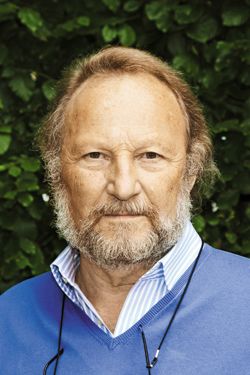Advances in Pharmaceutical Analysis
Special Issues
An introduction from the guest editors of this special supplement from LCGC Europe revealing recent developments in small-molecule drug analysis.
Pat Sandra1 and Davy Guillarme2, 1Research Institute for Chromatography, Kortrijk, Belgium, 2University of Geneva, University of Lausanne, Geneva, Switzerland
Davy Guillarme

Pat Sandra

An introduction from the guest editors of this special supplement from LCGC Europe revealing recent developments in small-molecule drug analysis.
In the LCGC Europe October 2015 supplement “Advances in Biopharmaceutical Analysis”, the analytical challenges in the analysis of large and heterogeneous protein biopharmaceuticals were addressed. Biopharmaceuticals are indeed the fastest growing area within the pharmaceutical industry but innovation in small-molecule drugs is still of great importance in the sector. It is estimated that research in both fields, small and large, will recognize an even distribution. This supplement therefore focuses on recent advances in small-molecule drug analysis, complementing the October 2015 supplement.
Giving a complete and detailed overview of all innovations in contemporary analytical methods for pharmaceutical analysis in a supplement is unrealistic and this issue is therefore based on selecting some important keywords within this research domain: sample preparation for biological fluids, quality by design (QbD), the power of mass spectrometry (MS), chiral recognition, and considerations on the analysis of counterfeits medicines.
Sample preparation is the first step in an analytical procedure for biofluids and its importance is often underestimated. The first contribution, authored by Lucie Nováková, provides an overview of conventional sample preparation techniques and presents the most recent developments for high throughput bioanalysis. Microextraction techniques, on-line sample preparation, and selective methods, as well as dried matrix (blood) spot analyses, are presented in detail.
Analytical procedures are critical processes in drug development and quality control. Quality by design (QbD) is gaining widespread acceptance in the pharmaceutical industry and is also more and more widely implemented in analytical work. Karen Gaudin and Ludivine Ferey describe the present trends in applying QbD to separation methods (particularly in liquid chromatography [LC]) in pharmaceutical analysis. A detailed description of tools involved in QbD methods are presented, and the benefits of implementing QbD in the laboratory are provided.
Developments in MS have gained momentum in recent years and are very rapidly implemented into pharmaceutical laboratories. Ronald de Vries, Rob J. Vreeken, and Filip Cuyckens show how recent highâresolution MS instruments can be used for both quantitative and qualitative measurements, making these a worthwhile alternative to “the golden standard” triple quadrupole MS systems for quantitation, as well as a powerful tool for identification of unknowns within the same analysis.
A significant number of smallâmolecule drugs are single enantiomers and chiral resolution methods are required during the synthetic routes of these drugs and for the final active pharmaceutical ingredient (API). Eric Francotte is an expert in chiral separation methods and he describes the state-of-the-art in chiral recognition separation methods with emphasis on LC and supercritical fluid chromatography (SFC). This contribution is a follow-up of the work described in LCGC Europe April 2016 entitled: “Practical Advances in SFC for the Purification of Pharmaceutical Molecules” (1).
Counterfeits or fake medicines are a growing problem, especially in developing regions. They may contain the active ingredients in a lower dose or even not at all, they may contain another active ingredient, or they may be contaminated with toxic ingredients. Because counterfeits are produced under uncontrolled conditions and have not been assessed by health authorities, they may be very harmful to the health of users. Control of imported medicines in developing countries is therefore of the utmost importance, but the analytical technique must be sufficiently simple, reliable, and cost-efficient. Julie Schappler and Serge Rudaz describe how capillary electrophoresis (CE) can fulfil these requirements. As CE is now recognized as a valuable technique by numerous Pharmacopoeia, it is indeed a good candidate in counterfeit analysis.
We hope that the contributions in this supplement are of interest to the LCGC Europe readers. Editing and reviewing the contributions was a pleasure for us and we thank our colleagues for an excellent job.
Reference
- E. Francotte, LCGC Europe29(4), 194–204 (2016).
An additional paper titled “On-Line Two-Dimensional Liquid Chromatography (2D-LC) in the Analysis of Pharmaceuticals” by Pat Sandra, Gerd Vanhoenacker, Mieke Steenbeke, Frank David, Koen Sandra, Claudio Brunelli, and Roman Szucs will be featured in an upcoming issue of LCGC Europe.

Common Challenges in Nitrosamine Analysis: An LCGC International Peer Exchange
April 15th 2025A recent roundtable discussion featuring Aloka Srinivasan of Raaha, Mayank Bhanti of the United States Pharmacopeia (USP), and Amber Burch of Purisys discussed the challenges surrounding nitrosamine analysis in pharmaceuticals.
Extracting Estrogenic Hormones Using Rotating Disk and Modified Clays
April 14th 2025University of Caldas and University of Chile researchers extracted estrogenic hormones from wastewater samples using rotating disk sorption extraction. After extraction, the concentrated analytes were measured using liquid chromatography coupled with photodiode array detection (HPLC-PDA).










